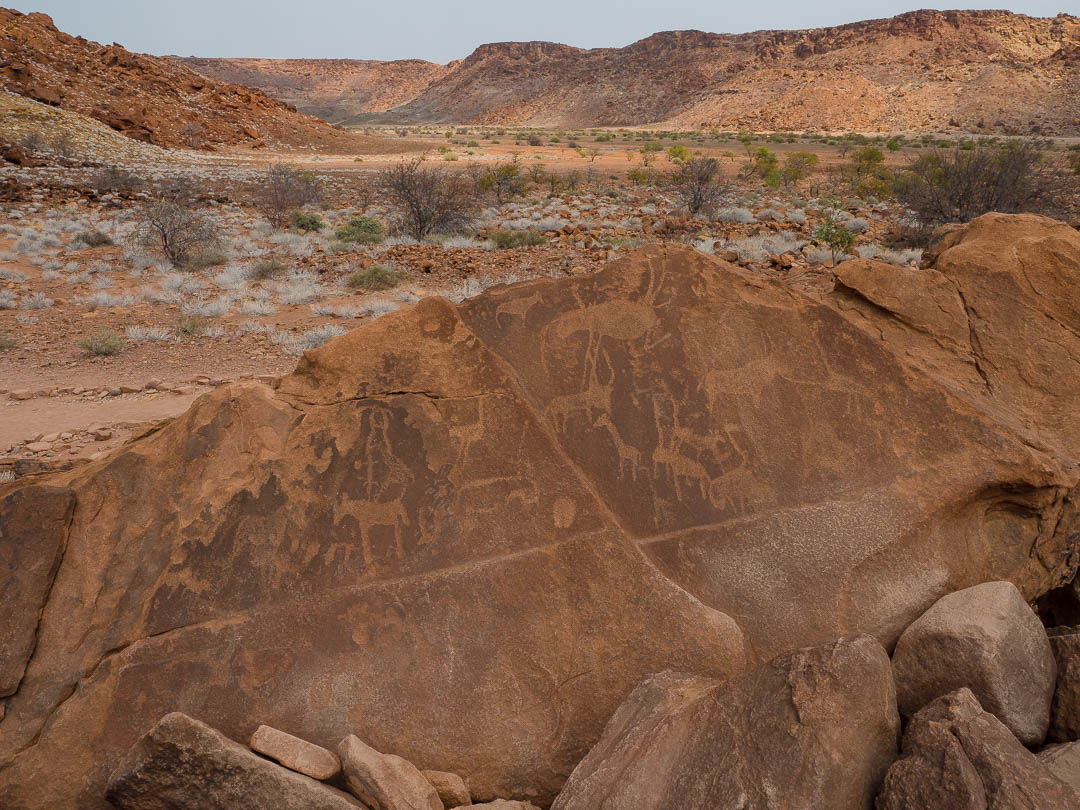
The last stop before finishing our memorable Namibia vacation in Etosha National Park was at a veritable UNESCO World Heritage Site, the world-famous stone-age rock engravings of Twyfelfontein in the Kunene region of north-western Namibia. For more photographs and info about this fascinating place, a glimpse of a petrified forest, some more roadside giraffes and another African sunset photo continue after the jump…
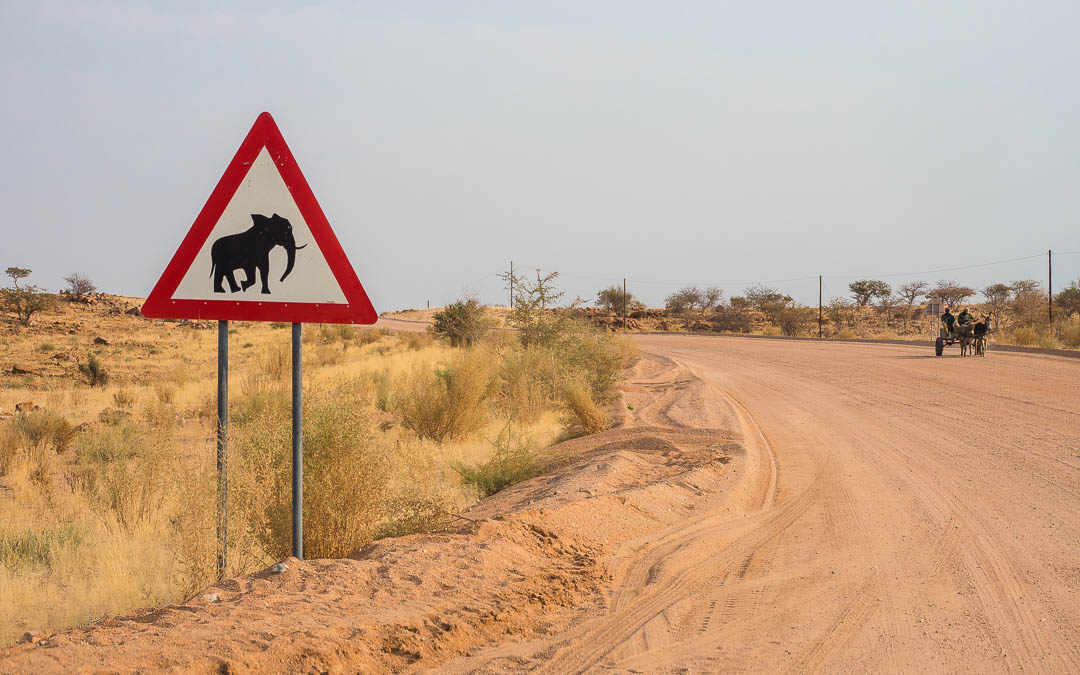
Can you imagine driving 3000 miles (4500 km) on gravel and sand roads through a country were street signs warn you of wild elephants crossing? And were you look out the car windows and all of a sudden see some wild giraffes next to the road?
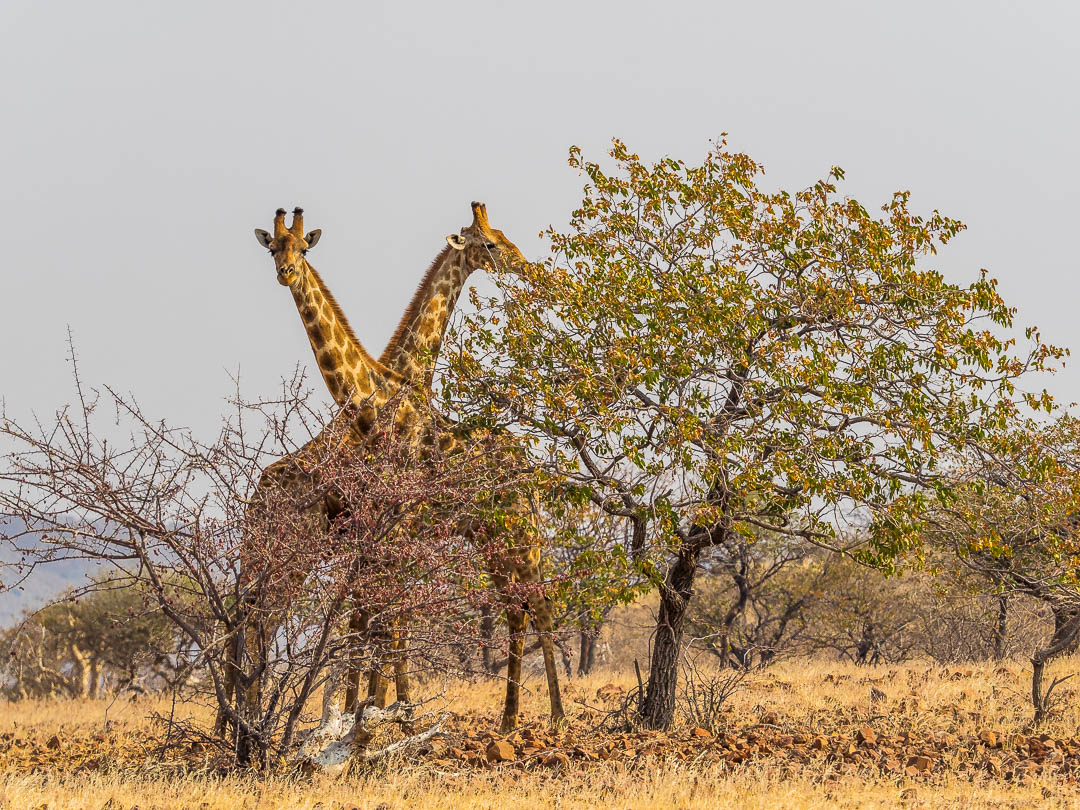
We drove through the Kunene region to Twyfelfontein (meaning “doubtful spring” in Africaans), the site of a little spring in a valley flanked by the slopes of a sandstone table mountain that receives hardly any rainfall and is subject to erosion due to significant changes of diurnal temperatures.
This remote place in a rugged environment has been inhabited for more than 6,000 years, first by stone age hunter-gatherers, then the San (bushmen), who used it as a place of worship and a site to conduct shamanist rituals. In the process of these rituals at least 2,500 items of rock carvings have been created, as well as a few rock paintings. It is one of the largest concentrations of rock petroglyphs in Africa and the UNESCO designated Twyfelfontein as Namibia’s first World Heritage Site back in 2007.

When we first visited the engravings 23 years ago we could simply walk up to them, nowadays there is a little visitor center where you need to enlist the services of a guide who takes you on a 60 minutes walk through the rocks to see the ancient art works, the oldest of which are presumed to be more than 10 000 years old, which is totally mind-blowing when you stand in front of it.

The carvings depict animals such as rhinoceroses, elephants, ostriches and giraffes as well as human and animal footprints. Some of the figures, most prominently the “Lion Man”—a lion with an extremely long rectangular kinked tail ending in a six-toed foot, depict the transformation of humans into animals, making it likely that they were created as part of shamanist rituals.


Not far from Twyfelfontein is the Petrified Forest, a deposit of large tree trunks that were swept downstream from central Africa by a large flood and covered by alluvial sands. Deprived of air, the organic matter could not rot and decay, but instead, over millions of years, underwent silicification, whereby each cell is individually fossilised and the appearance, if not the colour, of wood is retained.


Here you can find also some specimen of the Welwitschia mirabilis, a plant endemic to Angola and Namibia. It produces a single pair of foliage leaves. It is considered a living fossil, some individuals in Namibia are believed to be 2000 years old. Like Twyfelfontein, the Petrified Forest can only be visited with a guide. They speak English quite well and are very knowledgable, we definitely enjoyed learning about the history of the sites.
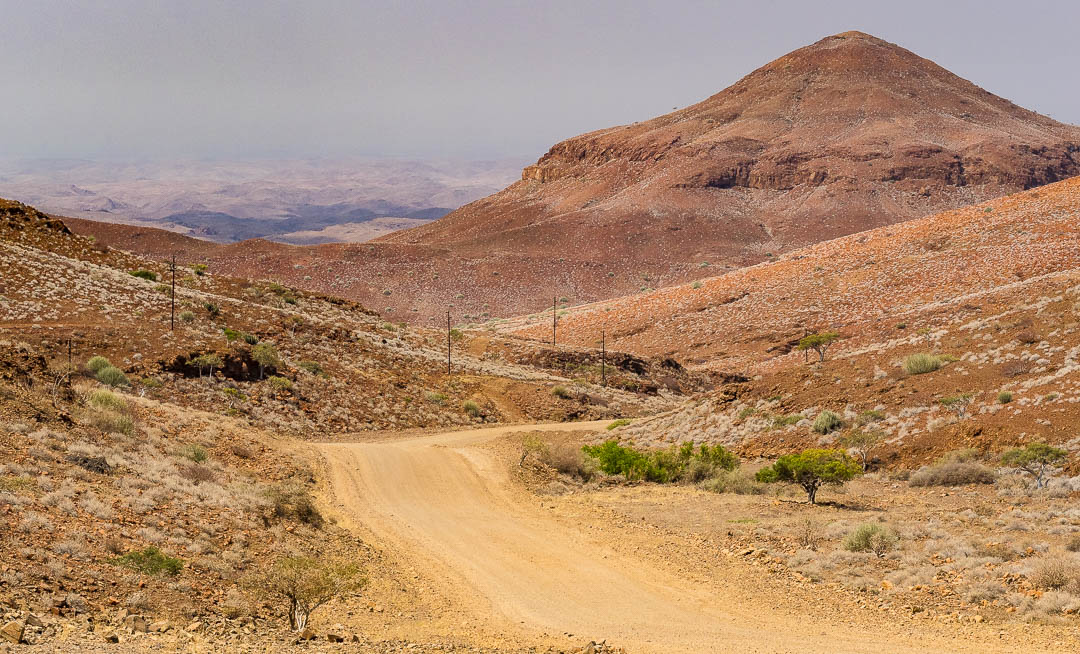
Through the Huab Valley we continued north to Palmwag, a little oasis in the stone desert of north western Namibia, where we spent the night before we entered to Etosha National Park for the safari part of our trip. Stay tuned!
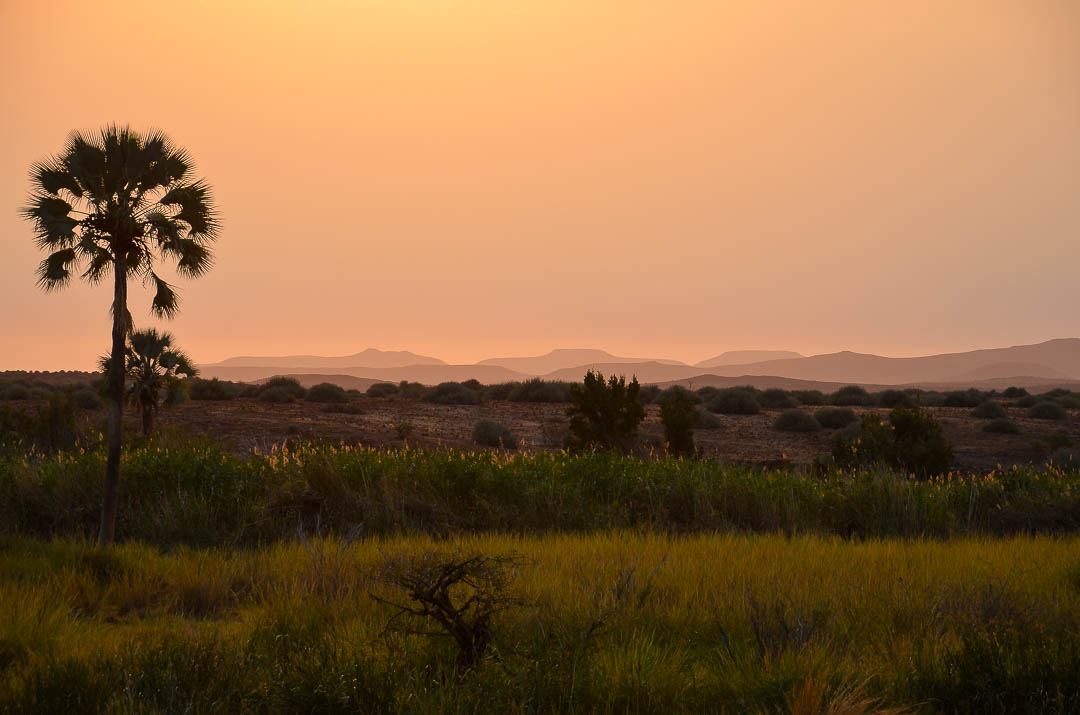

Have a good weekend!
Marcus
Related Posts:
Namibia Explored – Erongo MountainsNamibia Explored – Erongo Mountains
Namibia Explored – Sandwich Harbor
Namibia Explored – Diamond Ghost Town
Namibia Explored – Fish River Canyon
Namibia Explored – Quiver Tree Forest
My roommate is college was a swimmer from Namibia. I follow her on Instagram but you have given me a whole new perspective on the beauties from such an incredible place. I heard all the stories, but seen very few photos. You’ve truly captured it!
Thanks for your kind words, Annie, they mean so much! Marcus
Off the beaten trail the Four Corners area of the U.S. petroglyphs
abound, both amazing and humbling.
Thanks 🙂
Rock carvings are amazing. We too have few sites in India which are really really old. I haven’t seen them in person but saw few pictures. Looks like Namibia is a gold mine for nature.
The last picture of sun against the tree is superb!
Thank you Arv! It is always a joy to read your comments! Marcus
You are welcome, Marcus 😃
Wonderful impressions, Marcus. Amazing rock carvings! We have 3-4.500 years old Unseco world heritage rock carvings in Norway, totally different carvings of course, so this was most interesting.
Wishing you a great weekend,
The Fab Four of Cley
Wow, I wasn’t even aware there are rock carvings in Norway. Another reason to one day head up north!! Thanks so much for commenting! And I had a great weekend 🙂 ! Marcus
🙂
What stunning photos for me to enjoy over my Saturday morning breakfast coffee Marcus. I love the rock carvings they remind me of similar ones we saw in Kakadu near Darwin, Australia. Marion
Thanks, Marion, glad I was part of your breakfast 😉 ! Hope you had a good weekend! Greetings from the PNW! Marcus
How amazing to see all that!!!
Yes, I’m really grateful to have had the opportunity to this trip with my family. Thanks for commenting! Marcus